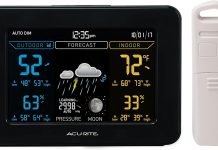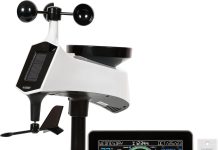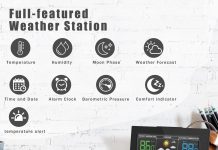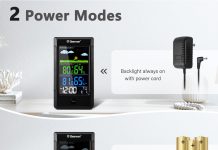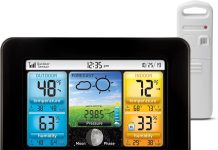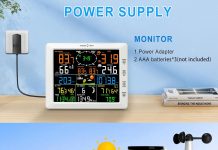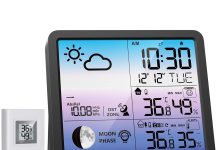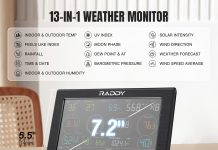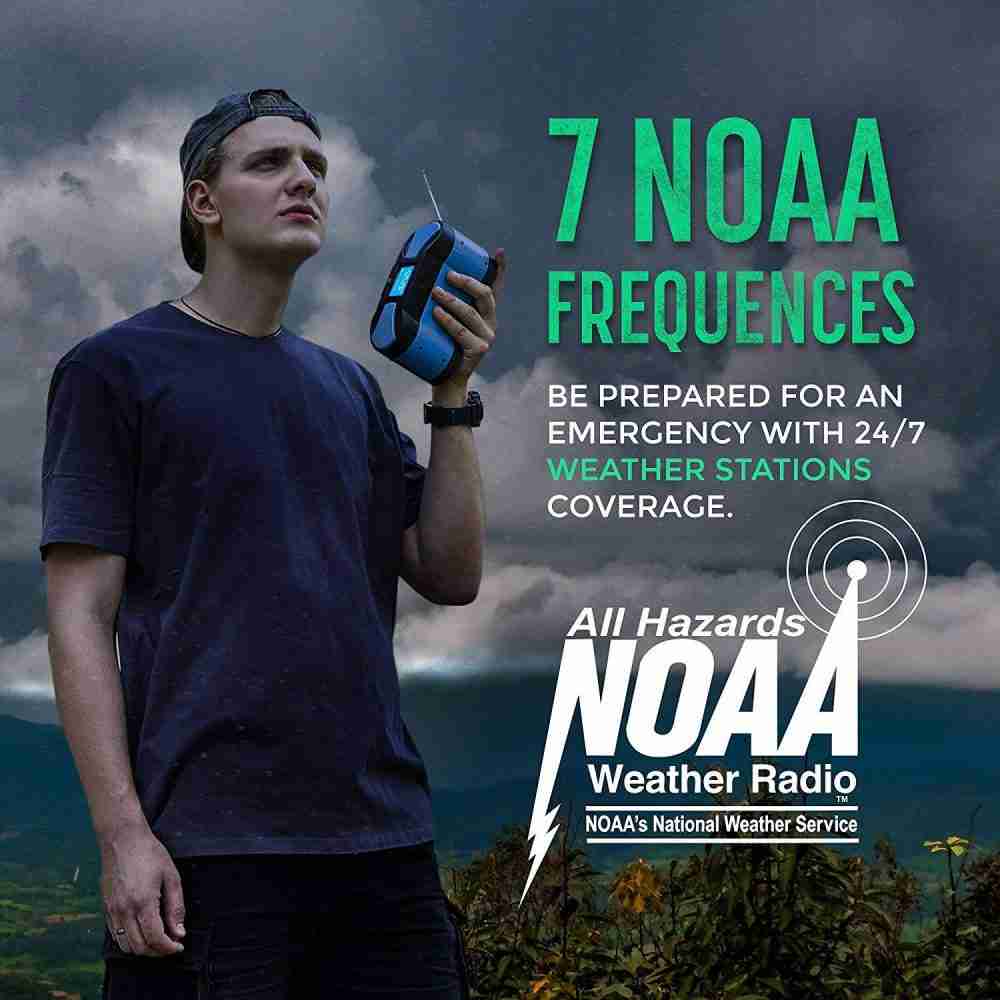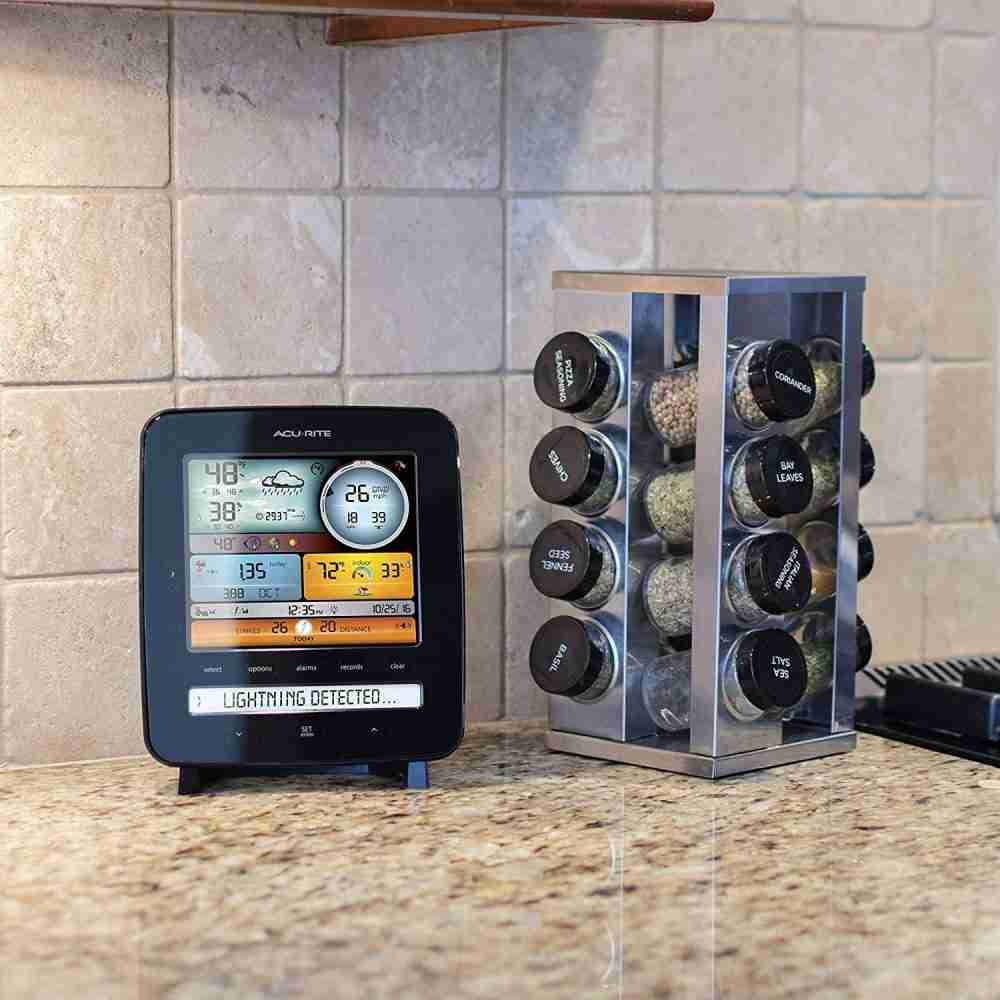Curious about the accuracy of home weather stations compared to their professional counterparts? Look no further as we uncover the truth behind this weather-tracking technology. As technology advances, many homeowners are embracing the convenience and accessibility of personal weather stations. However, the burning question remains: just how accurate are these devices when compared to the tried-and-true professional weather stations? Let’s explore the answer together and shed light on the reliability of these intriguing gadgets.
Factors affecting accuracy
Weather stations, whether they are designed for professional use or for personal use in homes, are subject to various factors that can affect their accuracy. It is important to understand these factors to ensure that the data collected and displayed by home weather stations is reliable and trustworthy.
Quality of sensors
One of the primary factors that can affect the accuracy of a home weather station is the quality of its sensors. The sensors in the weather station are responsible for measuring and detecting various weather parameters such as temperature, humidity, wind speed and direction, rainfall, and barometric pressure. If the sensors are of low quality or are not calibrated properly, the data collected may be inaccurate.
Placement and exposure
The placement and exposure of a home weather station can also significantly impact its accuracy. It is important to position the weather station in a location that provides representative and unobstructed readings. Ideally, the station should be placed in an open area, away from any sources of heat or cold, such as buildings or trees. Additionally, the station should not be exposed to direct sunlight, as this can artificially raise the temperature readings.
Calibration
Calibration is another crucial factor that can affect the accuracy of a home weather station. Calibration involves comparing the measurements of the station’s sensors to a known standard and making necessary adjustments to ensure accurate readings. Regular calibration, especially after extreme weather events or prolonged use, is essential for maintaining the accuracy of the weather station.
Signal interference
Signal interference can also impact the accuracy of a home weather station. Interference from nearby electronic devices or structures can disrupt the transmission of data from the station’s sensors to the display unit or weather app. This can result in inconsistent or inaccurate readings. It is important to minimize signal interference by placing the station’s sensors and display unit away from other electronic devices or significant structures that may block the signals.
Comparison of data
Home weather stations provide users with real-time data on various weather parameters. While they may not be as accurate as professional weather stations, they can still provide valuable information for personal use and general reference.
Temperature
Temperature is one of the most commonly measured weather parameters. Home weather stations typically have a temperature sensor that detects and displays the current temperature. However, it is worth noting that the accuracy of temperature readings can be impacted by factors such as sensor quality, placement, and calibration. Temperature readings from home weather stations can be useful for daily planning, gardening, and general comfort purposes.
Humidity
Humidity refers to the amount of moisture present in the air. Home weather stations often include humidity sensors that measure and display the current humidity levels. While the accuracy of humidity readings from home weather stations can vary, they can still provide valuable information for activities such as indoor climate control, mold prevention, and plant care.
Wind speed and direction
Wind speed and direction are crucial parameters for understanding weather patterns and conditions. Home weather stations often feature an anemometer to measure wind speed and a wind vane to determine wind direction. While the accuracy of wind measurements from home weather stations may not match that of professional stations, they can still give users a general idea of the local wind conditions, which can be useful for activities such as outdoor sports, boating, and gardening.
Rainfall
Rainfall measurements are important for tracking precipitation and monitoring local water resources. Home weather stations with a rain gauge can provide users with information about the amount of rainfall in their area. However, it is important to note that the accuracy of rainfall measurements from home weather stations can be influenced by factors such as the design and calibration of the rain gauge, as well as the placement of the station itself.
Barometric pressure
Barometric pressure, also known as atmospheric pressure, is a measure of the weight of the air above a specific location. Changes in barometric pressure can indicate weather patterns and can be used for short-term weather forecasting. Home weather stations typically include a barometer that measures and displays the current barometric pressure. While the accuracy of barometric pressure readings from home weather stations may not be as precise as those from professional stations, they can still provide users with a general understanding of atmospheric conditions.
Benefits of home weather stations
Despite the potential limitations in accuracy, home weather stations offer several benefits for users. These benefits make them a popular choice for individuals who are interested in monitoring local weather conditions and improving their understanding of meteorology.
Real-time data
One of the key advantages of home weather stations is the ability to provide users with real-time weather data. Unlike relying solely on weather forecasts from television or online sources, home weather stations update the user with up-to-the-minute information about temperature, humidity, wind, and other weather parameters specific to their location. This real-time data allows users to make informed decisions about outdoor activities, clothing choices, and even emergency preparedness.
Personalized forecasts
Home weather stations can also provide users with personalized forecasts based on the collected data. By analyzing the local weather patterns and trends, the station’s software or app can generate short-term forecasts tailored to the user’s specific location. This personalized forecasting feature can be particularly useful for planning outdoor events, agricultural activities, and travel.
Cost-effective
Compared to professional weather stations, home weather stations offer a more cost-effective option for weather monitoring. Professional weather stations often require significant investments and ongoing maintenance costs. In contrast, home weather stations are available at various price points, allowing users to choose the model that best suits their needs and budget. The cost-effectiveness of home weather stations makes weather monitoring accessible to a wider audience, enabling individuals and families to enjoy the benefits of weather tracking without breaking the bank.
Educational tool
Home weather stations can serve as valuable educational tools, especially for children and weather enthusiasts. By observing and analyzing the data collected by the weather station, users can gain a deeper understanding of weather patterns, climate variations, and the impact of weather on daily life. This hands-on learning experience can foster curiosity, scientific inquiry, and a lifelong appreciation for meteorology.
Variability among home weather stations
Not all home weather stations are created equal. There can be significant variability among different brands, models, and price ranges. Understanding the factors that contribute to the variability can help users make informed decisions when purchasing a weather station for their home.
Brand and model differences
Different brands and models of home weather stations may vary in terms of sensor quality, durability, accuracy, and features. It is important to research and compare different options to find a reputable brand and a model that aligns with your specific needs and requirements. Reading customer reviews and seeking recommendations from experienced weather enthusiasts can also provide valuable insights into the reliability and performance of specific brands and models.
Price range
Home weather stations are available at various price points, ranging from budget-friendly options to more high-end and feature-rich models. The price range can often reflect the quality of the sensors, the durability of the station, and the availability of advanced features such as wireless connectivity and data logging. It is important to evaluate your budget and prioritize the features that are most important to you when selecting a home weather station.
Features and specifications
Different home weather stations offer a range of features and specifications that can impact their functionality and accuracy. Some stations may include additional sensors for measuring UV radiation, soil moisture, or indoor air quality. Others may offer advanced connectivity options, such as Wi-Fi or Bluetooth, allowing users to access their weather data remotely through smartphone apps or online platforms. Considering the specific features and specifications that are important to you can help narrow down the options and find a weather station that meets your needs.
Accuracy of professional weather stations
Professional weather stations are designed to meet stringent standards of accuracy and reliability. These stations are typically operated and maintained by meteorological organizations, research institutions, and government agencies.
Higher precision
Professional weather stations often employ more sophisticated and precise sensors, resulting in higher accuracy compared to home weather stations. These stations are subject to rigorous testing and calibration procedures to ensure that the collected data meets predetermined standards. The higher precision of professional weather stations makes them invaluable for meteorological research, climate analysis, and the generation of accurate forecasts.
Quality control measures
Professional weather stations employ stringent quality control measures to ensure the accuracy of the collected data. These measures include regular calibration, maintenance, and adherence to standardized operating procedures. Advanced quality control processes, such as comparing measurements from multiple sensors and cross-validating data with neighboring stations, help identify and correct any discrepancies or outliers. The robust quality control measures implemented by professional weather stations contribute to their high reliability and accuracy.
More data points
Professional weather stations typically have a larger network of sensors spread across a wider geographical area. The availability of multiple data points enables meteorologists and climatologists to analyze weather patterns with a greater level of detail and accuracy. Having access to comprehensive weather data from professional stations is crucial for understanding regional and global climate dynamics, identifying climate trends, and improving weather forecasting models.
Specialized equipment
Professional weather stations often utilize specialized equipment and instruments to measure and record weather parameters. These instruments are designed and calibrated specifically for meteorological purposes, ensuring high accuracy and reliability. Advanced instruments, such as Doppler radar for monitoring rain and storm systems, weather balloons for measuring atmospheric conditions at different altitudes, and weather buoys for collecting data in marine environments, contribute to the exceptional accuracy of professional weather stations.
Real-world observations
To understand the accuracy of home weather stations compared to professional stations, real-world observations and studies provide valuable insights. These observations can come from user experiences, comparison studies, and validation against official data sources.
User experiences
Users of home weather stations often share their experiences and observations, providing real-world insights into the accuracy and performance of these stations. User reviews and forums dedicated to weather enthusiasts offer a wealth of information regarding the reliability of specific models, sensor accuracy, and long-term performance. While individual user experiences may vary, aggregating user feedback can give potential buyers a general idea of the accuracy levels they can expect from different home weather station models.
Comparison studies
Comparison studies between home weather stations and professional stations can provide a more objective assessment of accuracy. These studies involve side-by-side installations of home weather stations and professional stations, with the data collected from both stations analyzed and compared. Such studies can reveal the level of agreement or discrepancy between the measurements of different weather parameters. Although comparison studies cannot cover all possible scenarios and locations, they can provide valuable data on the overall accuracy of home weather stations.
Validation against official data
Home weather stations can also be validated against official data sources, such as those provided by meteorological organizations or government weather agencies. This validation involves comparing the data collected by home weather stations to the data from official sources and analyzing the level of agreement. While it may not be feasible for every user to access official data, independent validation studies and reports can shed light on the accuracy of home weather stations when compared to reliable and trusted sources.
Factors to consider when purchasing a home weather station
When selecting a home weather station, several important factors should be taken into consideration to ensure accuracy and satisfaction.
Accuracy specifications
Reviewing the accuracy specifications of a weather station is essential to understand its level of precision. Look for specifications that indicate the range and accuracy of each parameter measured by the station’s sensors. Beware of vague or overly optimistic claims, and prioritize weather stations that provide transparent and detailed accuracy information.
Sensor quality
The quality of the sensors used in a weather station directly impacts the accuracy of the measurements. Look for weather stations that utilize high-quality sensors from reputable manufacturers. Conduct research, read reviews, and consider seeking expert opinions to evaluate the reliability and performance of the sensors used in different home weather stations.
Installation requirements
Different home weather stations may have varying installation requirements. Consider factors such as the size and weight of the station, the need for a mounting pole or stand, and the availability of space in your desired installation location. Ensure that you have the necessary tools and equipment to properly install and secure the weather station for accurate and reliable measurements.
Connectivity options
Consider the connectivity options offered by home weather stations. Some stations allow for wireless connectivity through Wi-Fi or Bluetooth, enabling you to access and view your weather data remotely through a smartphone app or an online platform. Additionally, stations with data logging capabilities can store historical weather data, providing valuable information for long-term analysis and tracking.
Maintenance and calibration tips
Proper maintenance and regular calibration are essential to ensure the accuracy and longevity of a home weather station.
Sensor cleaning
Dust, debris, and other contaminants can accumulate on the sensors of a weather station, affecting their accuracy. Regularly clean the sensors according to the manufacturer’s instructions to ensure optimal performance. Use a soft, non-abrasive cloth or brush, and avoid using harsh cleaning agents that may damage the sensors.
Checking calibration
Periodically check the calibration of your home weather station and make necessary adjustments if required. Compare the readings of your station’s sensors to those of a known reference, such as a certified thermometer or a barometer. Consult the user manual or reach out to the manufacturer for guidance on how to calibrate the sensors properly.
Battery replacement
If your home weather station is powered by batteries, keep track of their lifespan and replace them as needed. Low battery levels can compromise the accuracy and reliability of the station’s measurements. Follow the manufacturer’s recommendations for battery replacement and ensure that you use high-quality batteries for optimal performance.
Regular updates
Stay up to date with firmware updates and software upgrades provided by the manufacturer. These updates often include bug fixes, performance improvements, and new features that can enhance the accuracy and functionality of your home weather station. Regularly check the manufacturer’s website or sign up for notifications to ensure that your station is running on the latest software version.
Emerging technologies and advancements
The field of home weather stations continues to advance, with emerging technologies and advancements pushing the boundaries of accuracy and functionality.
Improved sensor technology
Advancements in sensor technology are constantly improving the accuracy and reliability of home weather stations. Manufacturers are developing sensors with higher precision, increased sensitivity, and improved resistance to environmental factors. These advancements lead to more accurate measurements and enhanced performance across a range of weather parameters.
Machine learning algorithms
Machine learning algorithms are being integrated into modern home weather stations to improve the accuracy of forecasts and predictions. By analyzing vast amounts of historical weather data, these algorithms can learn and adapt to specific local weather patterns, resulting in personalized and more accurate forecasts.
Integration with smart home systems
Home weather stations are increasingly being integrated with smart home systems, allowing users to access and control their weather data through voice commands or mobile apps. This integration provides seamless connectivity and enhances the overall user experience. Users can effortlessly monitor weather conditions, receive alerts, and even automate certain tasks based on the data from their home weather station.
Conclusion
In conclusion, home weather stations offer a convenient and accessible way for individuals to monitor and track weather conditions in their immediate surroundings. While they may not match the precision and reliability of professional weather stations, home weather stations can still provide valuable real-time data and personalized forecasts. Factors such as sensor quality, placement, calibration, and connectivity options can influence the accuracy and functionality of home weather stations. By considering these factors, conducting research, and selecting reputable brands, users can maximize the accuracy and utility of their home weather stations. With proper maintenance and calibration, home weather stations can continue to provide valuable weather data, educate users on meteorology, and contribute to a better understanding of local weather patterns.


